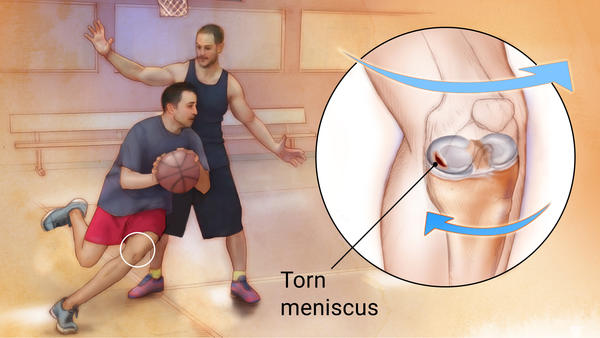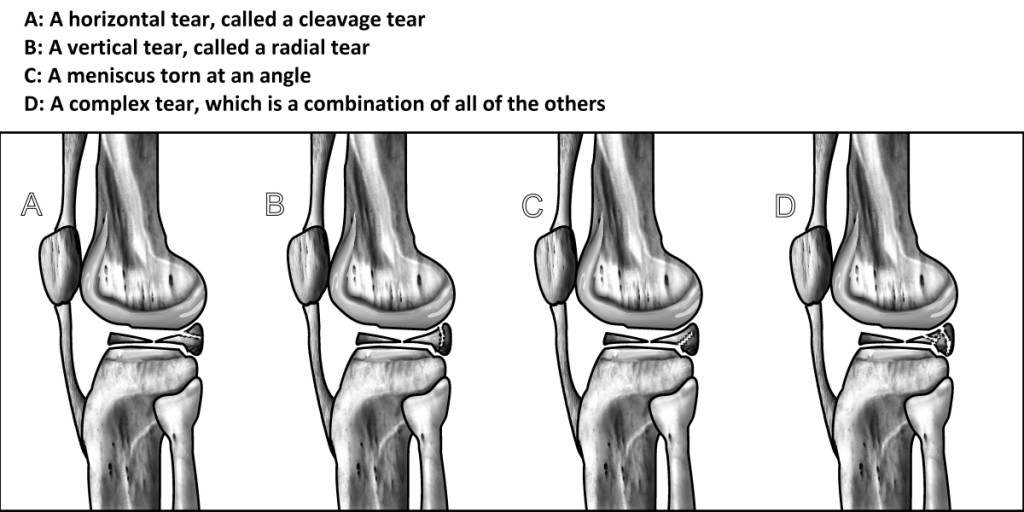If your doctor just told you that you have a torn meniscus and you need knee arthroscopy, you may decide you want to do more research before going straight into the operating room. What to do about a meniscus tear depends on the kind of tear, the location of the tear, and the quality of the meniscus that is left. The illustration shows the most common types of meniscal tears. Learning more about your injury can help you choose the wisest path for recovery.
If you are under forty, most doctors will surgically repair the meniscus, whereas if you are over forty, you would probably best be served by two other alternatives:
- Surgically trimming away and vacuuming out the torn part of the meniscus and leaving behind as much of the functioning meniscus as possible
- Beginning an aquatic physical therapy or pool program designed to protect the torn meniscus while strengthening the muscles surrounding the knee
How can a pool program help you with your knee? Here’s the theory: Imagine the torn meniscus is like a blister in the palm of your hand. If you clipped a hundred roses in your back yard, you hand would hurt and you would see that the skin is torn. What is the treatment? If you gently and carefully continue to clip roses, the blister will become a callus. That’s how the pool exercises work on a torn meniscus. What was sore, vulnerable tissue turns into protected, callus-like tissue.
Doing our pool physical therapy program allows you to unload your weight and take the stress off your knee joint while you strengthen your muscles in an environment of weightlessness. As your muscles surrounding the knee joint become stronger and more able to stabilize your sore knee, they become better shock absorbers in preventing the stress from going through the joint. Nothing on land duplicates this. If you tried a muscle-strengthening program on land, you would be damaging the meniscus further, but in the pool, you’re unloading the joint at the same time you are placing resistance on the muscles.
After several months of the pool program, you will find that with every step you take, your muscles take more of the stress off the joint and fewer aggravating forces go through your knee. You may live happily-ever-after with an MRI that shows a meniscus not exactly the way it was before, just as your hand with a callus will look different from normal skin. But if it doesn’t hurt anymore, you’re not doing any damage. So consider doing the pool program, making your pain go away, and staying ahead of the game.
Lynda Huey, M.S., founder of CompletePT and Huey’s Athletic Network, is a former athlete and coach whose own injuries led her into the water to find fitness and healing. She was educated at San Jose State University where she starred on the track and field team during its golden years.


